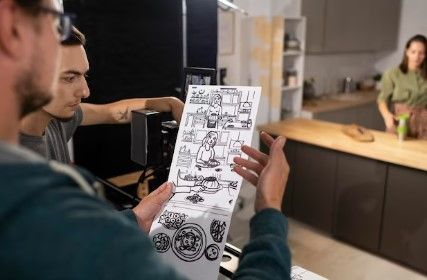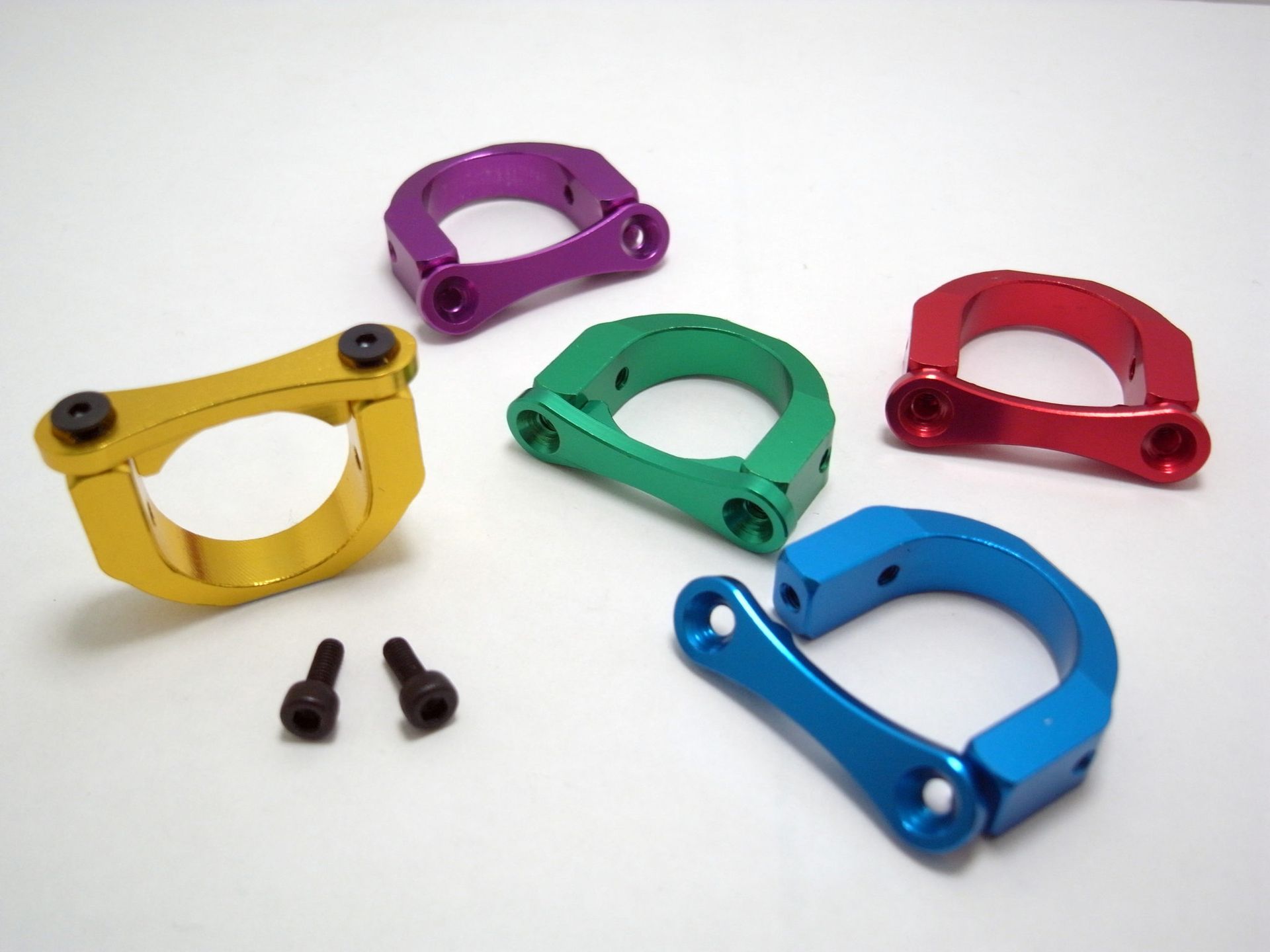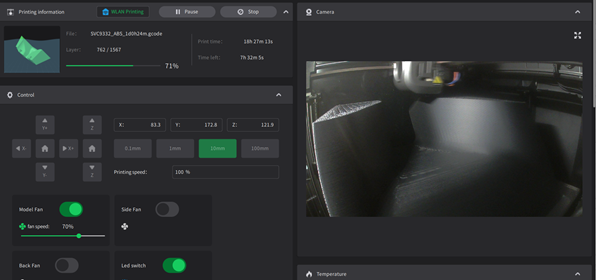Reverse Engineering and Hyper 3D Printing
Revolutionizing Manufacturing: The Unparalleled Edge of Reverse Engineering and Hyper 3D Printing

In the rapidly evolving world of manufacturing, staying ahead means not just keeping pace with current trends but pre-emptively leaping towards future innovations. Among these advancements, two stand out for their potential to transform the industry from the ground up: reverse engineering and Hyper 3D printing. These technologies are not just reshaping how products are designed and produced; they're redefining the very ethos of local manufacturing ecosystems and propelling the economy forward.
The Rebirth of Innovation Through Reverse Engineering
Reverse engineering, in its essence, serves as a beacon of innovation, illuminating the path for future advancements by delving into the core of existing technologies. This intricate process, fundamental to the evolution of product development, acts as a cornerstone for design engineers and manufacturing buyers who are on a quest to not only understand but also to reimagine and enhance the products that shape our world.
Imagine a scenario where a product with potential for improvement exists, yet its design intricacies are shrouded in mystery. Reverse engineering is the key that unlocks these secrets, allowing innovators to dissect and analyze products down to their minutest details. This meticulous examination paves the way for enhancements, modifications, and in some cases, a complete overhaul of the original design, ushering in a new era of improved functionality, efficiency, and user experience.
But the advantages of reverse engineering extend beyond mere product enhancement. It is a strategic tool that empowers companies to navigate the complex landscape of intellectual property (IP) rights. By understanding the design principles of existing products, businesses can innovate within the legal boundaries, ensuring their new creations are both groundbreaking and compliant with IP laws. This strategic navigation through the IP maze is critical for fostering an environment where creativity and legality coexist, propelling the industry forward while respecting the innovations of the past.
Furthermore, reverse engineering is instrumental in bridging the gap between legacy systems and modern technology. In industries where technology evolves rapidly, such as aerospace and automotive, the need to upgrade or replace older systems can pose significant challenges. Through reverse engineering, engineers can create interfaces that integrate old systems with new technologies, extending the life and utility of legacy systems. This not only saves costs but also minimizes disruptions in production and operations, ensuring a seamless transition into the future of manufacturing.
The collaborative potential of reverse engineering is also noteworthy. It facilitates a collaborative environment where ideas flourish. By dissecting and sharing knowledge about existing products, engineers and designers can work together more effectively, blending their expertise to forge innovations that might have been inconceivable in isolation. This synergy accelerates the innovation process, leading to faster development cycles and a more dynamic approach to problem-solving.
Reverse engineering also serves as a critical tool in competitive analysis. By understanding the components, materials, and manufacturing processes used by competitors, companies can gain strategic insights into market trends and performance benchmarks. This information is invaluable for maintaining a competitive edge, allowing businesses to adapt and innovate in response to market demands and competitor strategies.
In essence, the rebirth of innovation through reverse engineering is not just about looking backward to understand how something was made; it’s about looking forward with a foundation of knowledge to create products that are smarter, more efficient, and more aligned with the needs of tomorrow. As we stand on the brink of a new era in manufacturing, the role of reverse engineering in driving innovation has never been more critical. It offers a unique blend of retrospection and foresight, providing the tools necessary to navigate the complexities of modern product development and paving the way for the next generation of technological advancements.
Hyper 3D Printing: The Dawn of Manufacturing's Future
Hyper 3D printing, representing the zenith of additive manufacturing's capabilities, is a beacon of innovation, heralding a future where production limits are virtually nonexistent. This advanced form of 3D printing transcends the traditional constraints of additive manufacturing, offering a blend of speed, precision, and material diversity previously unattainable. It's not merely about fabricating objects; it's about architecting the future of manufacturing, layer by revolutionary layer.
The core of Hyper 3D printing lies in its unparalleled ability to fabricate complex geometries with meticulous accuracy and at speeds that dwarf conventional 3D printing technologies. This breakthrough is empowering design engineers and product developers to unleash their creativity, enabling the realization of designs that were once considered impossible. From intricate lattice structures that provide lightweight yet strong components for aerospace applications to complex medical implants designed for individual patients, Hyper 3D printing is paving the way for innovations that can change lives and industries.
For mechanical and manufacturing buyers, the implications of Hyper 3D printing are transformative. It offers an agile manufacturing solution that significantly reduces the lead time from design to production. This rapid prototyping capability is invaluable, allowing companies to iterate designs quickly and efficiently, thereby accelerating product development cycles. In an era where market demands are increasingly volatile and personalized products are becoming the norm, the ability to swiftly adapt and respond to changing consumer preferences is a game-changer.
Moreover, Hyper 3D printing democratizes manufacturing by lowering the barriers to entry for small businesses and startups. Traditional manufacturing methods often require significant upfront investment in tooling and machinery, making it difficult for smaller entities to compete. Hyper 3D printing eliminates many of these costs, enabling innovators and entrepreneurs to bring their visions to market with reduced financial risk. This leveling of the playing field is a boon for local economies, fostering innovation, competitiveness, and diversity in the manufacturing sector.
Sustainability is another cornerstone of Hyper 3D printing. By building objects layer by layer, it minimizes waste compared to subtractive manufacturing processes, which carve out solid materials. Additionally, the technology supports the use of a wide range of materials, including recycled plastics and metals, further enhancing its environmental credentials. As industries worldwide strive to reduce their carbon footprint, Hyper 3D printing offers a path forward that aligns with sustainability goals without compromising on performance or profitability.
The fusion of Hyper 3D printing with other cutting-edge technologies, such as artificial intelligence and machine learning, is setting the stage for even more astonishing developments. Smart Hyper 3D printers, capable of optimizing their own settings in real-time and detecting potential flaws before they occur, are on the horizon. Such advancements promise to further boost efficiency, reduce waste, and enhance the quality of printed products, heralding a new era of manufacturing excellence.
In embracing Hyper 3D printing, local businesses and the wider manufacturing industry stand at the threshold of a new dawn. This technology's promise of faster, more efficient, and more sustainable production methods is not just an opportunity but a call to action for forward-thinking companies. By integrating Hyper 3D printing into their operations, businesses can not only streamline their production processes but also contribute to a more innovative, inclusive, and sustainable future for manufacturing. The journey towards the next frontier of manufacturing excellence is underway, and Hyper 3D printing is leading the charge.
Economic Implications and Local Prosperity
The fusion of reverse engineering and Hyper 3D printing heralds not just a technological revolution but an economic transformation with far-reaching implications. These innovations are not merely tools for manufacturing efficiency; they are pillars supporting the broader economic structure, fueling growth, and enhancing the prosperity of local communities.
Cost Efficiency and Enhanced Competitiveness
At the heart of this transformation is the dramatic cost reduction in the design-to-manufacturing cycle. Reverse engineering allows businesses to decode and refine existing designs, bypassing extensive research and development expenses. Simultaneously, Hyper 3D printing slashes production costs by reducing material waste and eliminating the need for expensive tooling and machinery. For small to medium-sized enterprises, this cost efficiency is a game-changer, leveling the playing field with larger competitors and opening up new markets previously beyond reach.
The ripple effect of these cost savings is profound. By reducing financial barriers, more local businesses can enter the market, fostering a competitive environment that drives innovation and quality. This competitiveness not only benefits the manufacturing sector but also stimulates the entire local economy by providing consumers with more choices and better products.

Job Creation and Workforce Development
Another pivotal aspect of this technological shift is job creation. While automation and additive manufacturing technologies like Hyper 3D printing often spark debates about workforce displacement, the reality is nuanced. These technologies create new opportunities for skilled labor, from design engineers specializing in reverse engineering software to technicians operating advanced 3D printers. Moreover, the demand for customized and locally produced goods is generating more jobs in small-scale manufacturing, counterbalancing any job losses due to automation.
Furthermore, the adoption of these technologies encourages workforce development. As businesses invest in reverse engineering and Hyper 3D printing, they also invest in training their employees to master these new tools. This emphasis on skill development not only enhances employee value but also prepares the workforce for the future of manufacturing, ensuring local economies remain resilient in the face of global changes.
Stimulating Local Innovation and Entrepreneurship
The economic impact of reverse engineering and Hyper 3D printing extends beyond manufacturing efficiency and job creation; it fosters a culture of innovation and entrepreneurship. By democratizing the manufacturing process, these technologies enable inventors, designers, and entrepreneurs to prototype and produce their products locally. This accessibility stimulates a grassroots innovation ecosystem where local startups can flourish, further diversifying the economy and bolstering economic resilience.
Local businesses can swiftly respond to market demands, creating a dynamic marketplace where innovation thrives. This not only attracts investment but also positions the local economy as a hub for technological and creative industries, drawing talent and resources that contribute to sustained economic growth.
Revitalizing Local Manufacturing for Global Impact
Ultimately, the synergy between reverse engineering and Hyper 3D printing has the potential to revitalize local manufacturing sectors, making them more sustainable, competitive, and innovative. This revitalization is not just about economic gains; it's about building a self-reliant community that values sustainability, champions local production, and is equipped to make a significant impact on the global stage.
By fostering a robust local manufacturing ecosystem, these technologies contribute to a balanced and inclusive economic model that benefits everyone. From creating high-quality jobs to stimulating local innovation and entrepreneurship, the economic implications of reverse engineering and Hyper 3D printing are vast, painting a promising picture of local prosperity and global competitiveness.
The adoption of these technologies signifies a commitment to economic resilience, environmental sustainability, and community empowerment. As we stand on the brink of this new era in manufacturing, the collective effort to embrace and integrate reverse engineering and Hyper 3D printing will undoubtedly pave the way for a prosperous and sustainable future.
A Call to Embrace the Future
The convergence of reverse engineering and Hyper 3D printing marks not just a pivotal moment in manufacturing history but a clarion call for industry leaders, design engineers, mechanical buyers, and manufacturing buyers to pioneer the future of innovation. As these technologies unfold their potential, the implications for local businesses and the broader economy are profound and multifaceted. The future is not just arriving; it's being designed and printed, layer by layer, in our very workshops and design studios.
The beauty of these technologies lies not only in their technical capabilities but in the mindset shift they demand from us. To fully harness their potential, we must be willing to reimagine the entire product lifecycle—from conception through to production, and even beyond, into the realms of recycling and repurposing. This is a future where the linear production models of the past give way to a more circular, sustainable, and innovative approach, where every step is an opportunity for creativity and efficiency.
For design engineers, the call to embrace these technologies is a call to push the boundaries of what’s possible, blending artistry with engineering to create products that are not only functional but revolutionary. For mechanical and manufacturing buyers, it’s an invitation to rethink procurement, to prioritize versatility, sustainability, and innovation in their sourcing strategies. Embracing Hyper 3D printing and reverse engineering means looking beyond the conventional supply chain, to a future where the supply chain adapts to the needs of innovation, not the other way around.
Moreover, the integration of these technologies into our manufacturing ecosystems promises to fortify local economies. By reducing dependency on overseas production and fostering a culture of local innovation, we can keep our economies robust and resilient. This is a future where local manufacturers are not just participants in the global market but leaders and innovators, driving forward with products and solutions that reflect the needs and values of their communities.
This call to embrace the future is also a call to action for policymakers, educators, and industry leaders to collaborate in building a framework that supports this technological evolution. It's about creating an environment where innovation thrives, where the next generation of engineers and designers are empowered with the skills and knowledge to leverage these technologies to their fullest potential. By investing in education, infrastructure, and policy that support innovation, we can ensure that this future is not only envisioned but realized.
In embracing reverse engineering and Hyper 3D printing, we are not just adopting new technologies; we are committing to a future of sustainable growth, innovation, and economic resilience. The opportunities are limitless, but the time to act is now. Let's not wait for the future to happen to us; let's build it, print it, and shape it with our own hands. The future belongs to those who innovate — let's ensure that future is ours.












